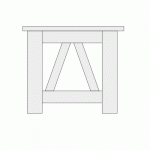DynaGlide
Member
- Joined
- May 16, 2017
- Messages
- 1,588
mino said:Looks great. I would reconsider dropping the dfecorative X parts. The sides look a bit baren without it, now it is complete.DynaGlide said:I probably skipped some steps but with young kids and spring break this week I don't have the luxury to take pictures of everything. Very happy with how it is shaping up to this point and I'll do some final tweaking before working on finishing.
Matt
Or think up some other decorative fill, not have to be X ... maybe even simple vertical "poles" would work out well. The decorative X in the original also "hides" the shoes placed in there when looked from side, makinge the whole think a bit more "woody". Having something "woody" in that area just seems right, me thinks.
You're right and that's been gnawing at me. I don't have the material left to do the X's. I could buy more. I'll give it some thought.






